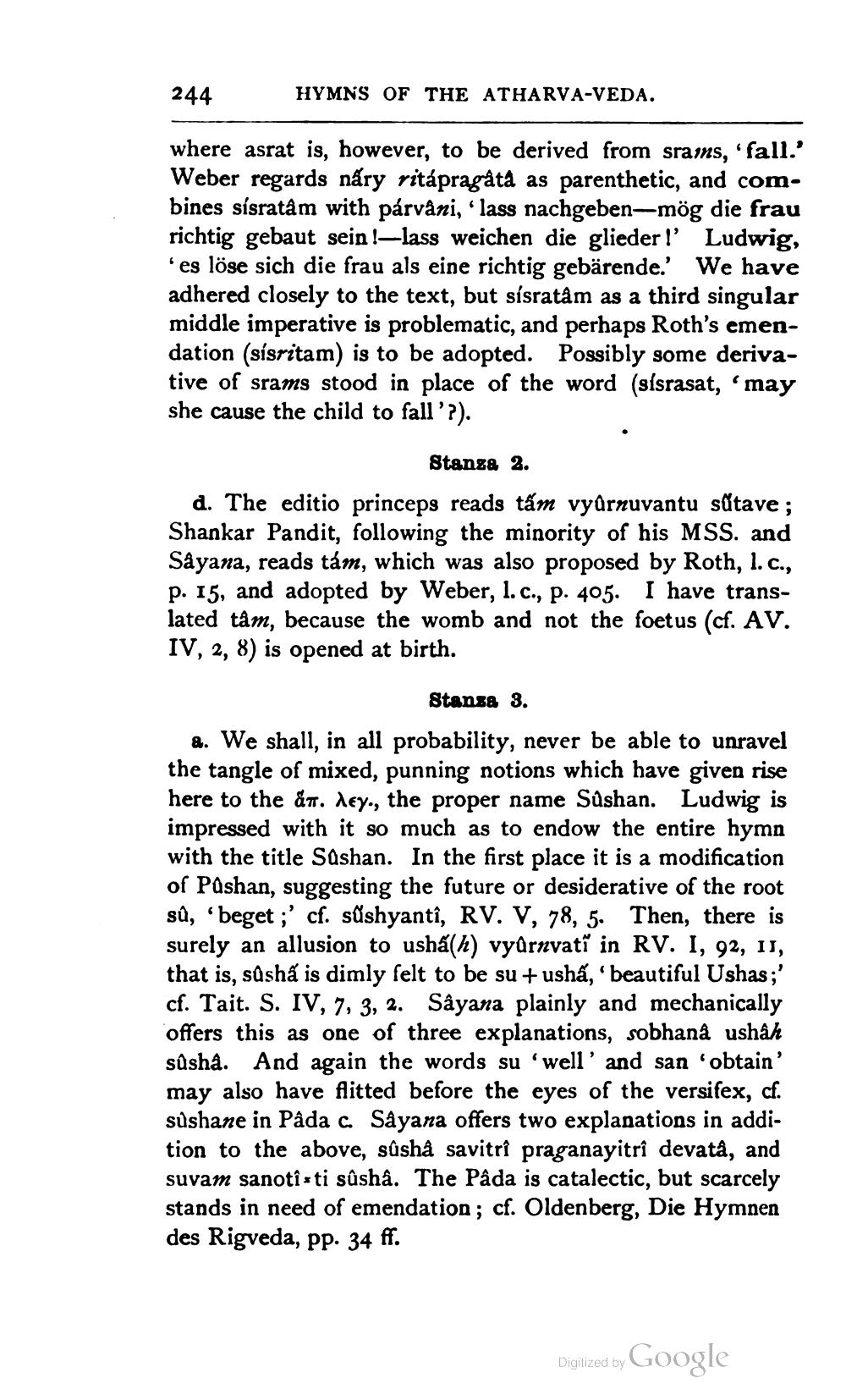________________
244
HYMNS OF THE ATHARVA-VEDA.
where asrat is, however, to be derived from srams, 'fall.' Weber regards náry ritápragata as parenthetic, and combines sísratâm with párvåni, ‘lass nachgeben-mög die frau richtig gebaut sein !-lass weichen die glieder!' Ludwig,
es löse sich die frau als eine richtig gebärende.' We have adhered closely to the text, but sisratam as a third singular middle imperative is problematic, and perhaps Roth's emendation (sisritam) is to be adopted. Possibly some derivative of srams stood in place of the word (sísrasat, ‘may she cause the child to fall'?).
Stanza 2. d. The editio princeps reads tấm vyúrnuvantu satave; Shankar Pandit, following the minority of his MSS. and Såyana, reads tám, which was also proposed by Roth, 1.c., p. 15, and adopted by Weber, 1.c., p. 405. I have translated tâm, because the womb and not the foetus (cf. AV. IV, 2, 8) is opened at birth.
Stansa 3.
2. We shall, in all probability, never be able to unravel the tangle of mixed, punning notions which have given rise here to the dr. dey., the proper name Sushan. Ludwig is impressed with it so much as to endow the entire hymn with the title Sashan. In the first place it is a modification of Pushan, suggesting the future or desiderative of the root sů, 'beget ;' cf. sushyantî, RV. V, 78, 5. Then, there is surely an allusion to ushá() vyūrnvats in RV. I, 92, II, that is, sûsha is dimly felt to be su + ushá, beautiful Ushas;' cf. Tait. S. IV, 7, 3, 2. Sâyana plainly and mechanically offers this as one of three explanations, sobhana ushah sûsha. And again the words su 'well' and san 'obtain' may also have Aitted before the eyes of the versifex, cf. sushane in Pâda c. Sâyana offers two explanations in addition to the above, sûshå savitri praganayitrî devatà, and suvam sanotîsti sûsha. The Pâda is catalectic, but scarcely stands in need of emendation ; cf. Oldenberg, Die Hymnen des Rigveda, pp. 34 ff.
Digized by Google




